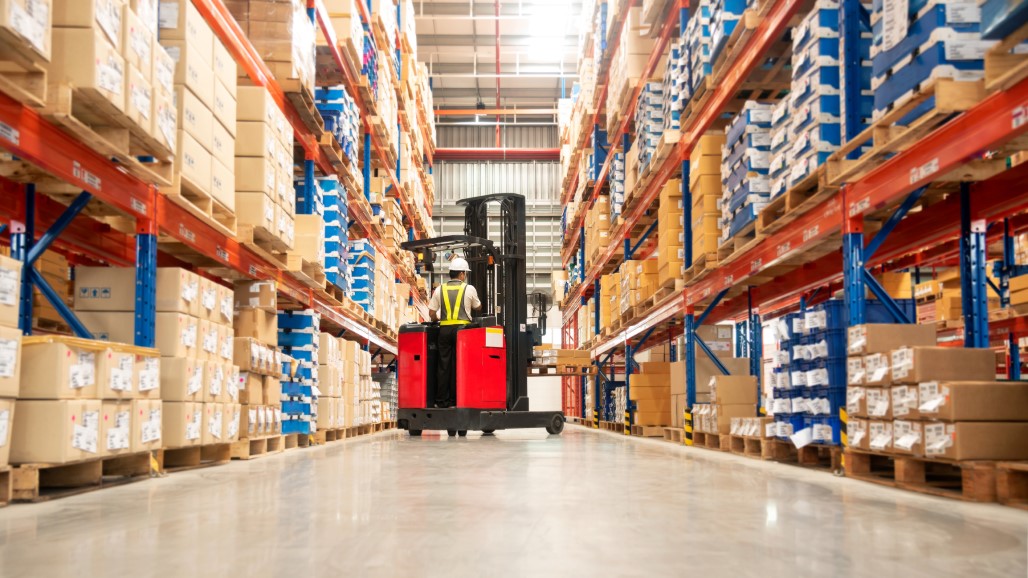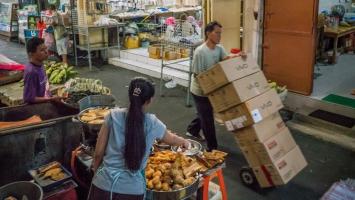
Economic and political disruptions have triggered a reconfiguration of global supply chains, which is driving more investors to ASEAN. Photo credit: iStock/Kamonchai Mattakulphon.
Foreign direct investment flows to the region hit a record $224 billion in 2022.
Despite overlapping crises gripping the world, foreign direct investment (FDI) in ASEAN reached a record high of $224 billion in 2022, up 5.5% from the previous year. The resilience of FDI flows to Southeast Asia is in part due to the reshaping of global supply chains and the greening of emerging markets.
Released in December, the ASEAN Investment Report 2023 said some developing regions, including Southeast Asia, bucked the FDI downtrend. It noted that the conflict in Ukraine, high prices of food and energy, the risk of recession, and rising public debt affected global FDI, which fell 12% to $1.3 trillion in 2022.
Major factors behind the uptrend in ASEAN include opportunities from regional integration, which is driving economic and industrial growth; improving investment policy environment; and business expansion across the region. The clean energy transition and shift to electric vehicles are also fueling investor appetite in the region.
Developed with technical support from the United Nations Conference on Trade and Development and financial support from the Government of Indonesia, the report provides an analysis of FDI trends and developments and identifies emerging issues and opportunities as well as policy options.
Relocation hub
“ASEAN solidified its position as a top recipient of investment within the developing world, with inflows surpassing those directed toward [the People’s Republic of] China for the second consecutive year,” the report said. “The region’s share of global FDI expanded further, growing from less than 15 per cent in 2021 to exceed 17 per cent.”
Increases were recorded in the main modes of international investment—announced greenfield projects, international project finance deals, and cross-border mergers and acquisitions.
“Multinational enterprises in the region are proactively expanding across ASEAN, building regional value chains and fortifying supply chain networks,” the report said. Equity investment went up 8% to $127 billion, or 56% of FDI in 2022, while reinvestment grew 5% to $86 billion or 38% of the total.
“Geopolitical tensions and pandemic-driven disruptions have triggered a wave of supply chain restructuring, favoring ASEAN as a relocation hub. This environment motivates investors, including those already in ASEAN, to expand capacities, establish stronger regional footholds and reinforce supply chains,” it said.
A strong “pull” factor for FDI is regional integration (i.e., ASEAN Economic Community, Regional Comprehensive Economic Partnership), which offers opportunities for firms to access rapidly growing markets and natural resources, scale up operations, exploit locational advantages, and strengthen regional value chains.
Top recipients
Malaysia, Singapore, and Viet Nam posted record highs in FDI in 2022. Growth in Inflows to Cambodia and Indonesia was flat but investments were still high. Singapore led in FDI with $141 billion, up 10%, while Malaysia saw the highest growth at 39% to $17 billion.
High-performing sectors are manufacturing, wholesale and retail trade, digital economy, and finance. There is also growing interest in renewables and the electric vehicle sector.
The number of projects in the SDGs sector that attracted foreign investments rose for a second year in a row, but FDI flows remained uneven with infrastructure and renewables attracting more interest than water, sanitation, and hygiene projects.
Emerging issues and opportunities
The report highlighted four key areas for policy action. These are international tax reforms, global supply chain restructuring, the energy transition, and electric vehicle supply chain.
Global tax reforms. The report said ASEAN must prepare for the impact of international tax reforms proposed by the Base Erosion and Profit Shifting (BEPS) project of the Group of 20 and the Organisation for Economic Co-operation and Development (OECD), which address tax avoidance practices of multinational enterprises. A major reform is setting a global minimum tax of 15% on the profits of enterprises with 750 million euros in revenue or more. Its implementation, which starts this year, will affect FDI policies and promotion, such as policies on special economic zones where enterprises enjoy profit-based tax incentives. Most ASEAN member states have created special economic zones to attract foreign investors.
Reshaping of supply chains. The region is expected to continue to benefit from the restructuring of global supply chains. “To sustain momentum, active FDI promotion and continuous outreach are crucial. Effective communication of regional development, integration, synergies, and emerging prospects can attract potential investors,” the report said. “Timely achievement of AEC and RCEP [Regional Comprehensive Economic Partnership] milestones is vital."
Energy transition. ASEAN needs to invest $180 billion every year to increase the share of renewable energy to 23% of primary supply and 35% of installed capacity by 2025. However, investments in the region are nowhere near the target with the value of international renewable energy projects estimated at only $43 billion in 2022 and domestic investment projects even farther behind. More than 40% of financing for large-scale projects came from the private sector between 2014 and 2018. To improve FDI promotion in this sector, the report said policymakers should look at the entire renewable energy supply chain, including renewable technologies and equipment and their integration into manufacturing sites. “Encouraging private engagement, including international investment, in the development of eco-industrial parks, eco-SEZs [special economic zones] and environmentally friendly data centers across the region can support ASEAN’s energy transition goals.” Accelerating regional cooperation initiatives, such as cross-border trade, will also enhance the investment environment for renewable energy.
Electric vehicle supply chain. International investment in this area grew 570% to $18 billion in 2022, driven by “growing demand, emerging markets, favorable policies, incentives, and supply chain strategies.” Upstream activities, specifically mining and processing of critical minerals, attracted the most investments. The region is rich in these minerals. Indonesia is the world’s largest producer of nickel and second largest producer of cobalt, which are used in making batteries. The report noted that nine of the top 10 battery manufacturers are active investors in the region.
Several ASEAN member states are positioning themselves as regional automotive hubs and have started to attract FDI in manufacturing. ASEAN itself wants to develop a Regional Electric Vehicle Ecosystem. “Promoting FDI in the EV supply chain is a major industrial policy opportunity,” the report said. “Policymakers should customize investment promotion to encompass diverse actors in the EV supply chain, aligned with energy transition goals.” For example, linkages between multinationals and small and medium-sized enterprises should be strengthened, while intraregional sourcing and production networks should be facilitated.
This article was first published by BIMP-EAGA on 10 January 2024.

BIMP-EAGA
The Brunei Darussalam–Indonesia–Malaysia–Philippines East ASEAN Growth Area, or BIMP-EAGA, is a cooperation initiative established in 1994 to spur development in remote and less developed areas in the four participating Southeast Asian countries.


